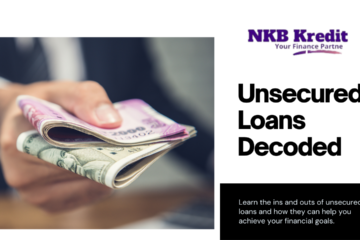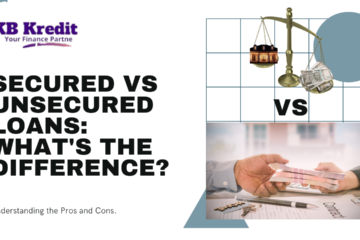
In the ever-evolving landscape of personal and business funding, unsecured loans have emerged as a flexible and accessible option for individuals and entrepreneurs seeking financial assistance without the burden of collateral. This comprehensive guide aims to shed light on unsecured loans, unraveling the intricacies of borrowing without collateral, and providing valuable insights into their advantages, risks, and the application process.
I. Understanding Unsecured Loans.
Unsecured loans, in contrast to secured loans, do not require borrowers to pledge any collateral as a guarantee for the borrowed amount. Instead, lenders extend credit based on the borrower’s creditworthiness, financial history, and income. This form of borrowing offers a level of convenience and accessibility, as it eliminates the need for assets such as real estate or vehicles to secure the loan.
2. Advantages of Unsecured Loan
1.No Collateral Requirement
The primary advantage is the absence of collateral, making unsecured loans accessible to individuals without valuable assets.
2.Quick Approval Process.
faster approval process compared to secured loans, as there is no need for collateral valuation.
3.Versatile Use of Funds.
Borrowers have the flexibility to use unsecured loan funds for various purposes, from consolidating high-interest debt to covering unexpected expenses.
4.Accessible to a Broader Audience.
Individuals with varying financial backgrounds can qualify for unsecured loans, depending on factors such as credit history, income, and employment stability.
3.Risks and Considerations
1.Higher Interest Rates.
Unsecured loans typically come with higher interest rates compared to secured loans, reflecting the increased risk for lenders.
2.Creditworthiness Matters.
Lenders heavily rely on the borrower’s creditworthiness, and individuals with lower credit scores may face challenges in securing favorable terms.
3.Limited Loan Amounts.
Without collateral, lenders may limit the amount of credit extended, which could be insufficient for significant financial loan needs.
4.Potential Impact on Credit Score.
Late or missed payments on can negatively impact the borrower’s credit score, affecting future borrowing capabilities.
4. Applying for Unsecured Loans
1.Check and Improve Credit Score.
Before applying, review and improve your credit score by paying down existing debts and addressing any discrepancies on your credit report.
2.Research Lenders.
Investigate different lenders, such as internet loan platforms, credit unions, and banks. To choose which option best suits your needs, compare terms, interest rates, and user reviews.
3. Prepare Financial Documentation.
Gather necessary documents, such as proof of income, employment history, and personal identification, to streamline the application process.
4.Complete the Application.
Complete the loan application completely and with the necessary data.
5.Review Loan Terms.
Carefully review the terms and conditions of the loan, including interest rates, repayment terms, and any associated fees. Make sure you comprehend the financial obligation completely.
5. Alternatives to Unsecured Loans
1.Secured Loans.
Consider secured loans if you have valuable assets to use as collateral, potentially securing lower interest rates.
2.Negotiate with Existing Creditors.
If seeking a loan for debt consolidation, consider negotiating with existing creditors for more favorable terms or repayment plans.
3.Emergency Savings.
Establish and maintain an emergency savings fund to cover unexpected expenses, reducing the reliance on loans for financial emergencies.
Conclusion
Unsecured loans represent a valuable financial tool for individuals and entrepreneurs looking to access funds without the need for collateral. Understanding the advantages, risks, and application process is essential for making informed borrowing decisions. As with any financial undertaking, careful consideration of personal financial circumstances, responsible borrowing practices, and a commitment to timely repayments are key to maximizing the benefits of unsecured loans while mitigating potential risks. By navigating the unsecured lending landscape with knowledge and prudence, borrowers can harness the potential of unsecured loans to achieve their financial goals.



